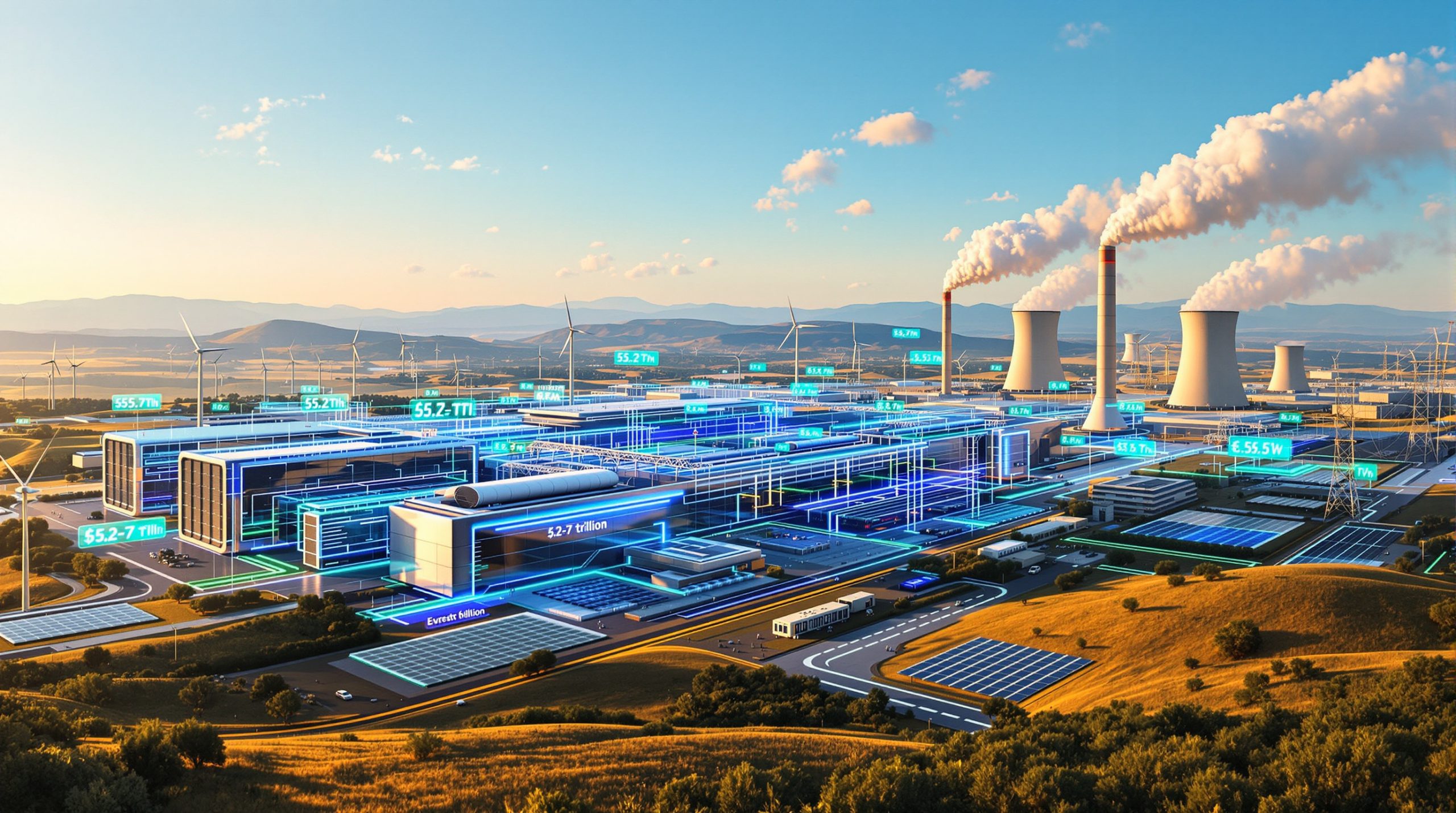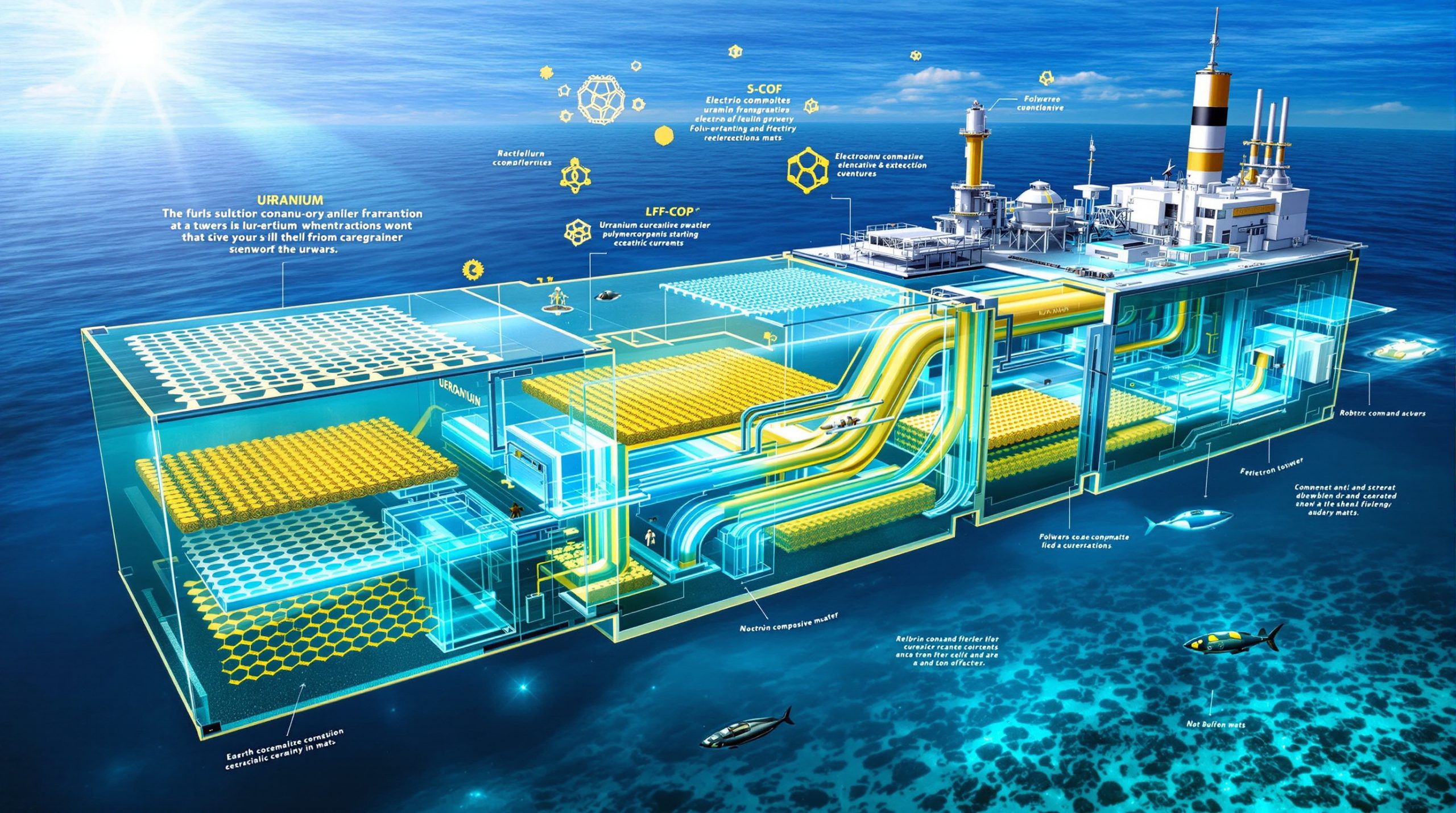The accelerating transition toward renewable energy systems has created unprecedented dependencies on specific geological resources that extend far beyond traditional fossil fuel considerations. These critical minerals and the green transition represent the foundation upon which modern decarbonisation strategies must be built, yet their supply chains remain concentrated in politically sensitive regions with complex extraction challenges.
Financial markets increasingly recognise that energy security now depends as much on mineral resource access as on traditional energy supplies. The implications for both developed and developing economies are profound, particularly for African nations sitting atop some of the world's most substantial mineral endowments.
Understanding Africa's Strategic Position in the Critical Minerals Ecosystem
Defining Critical Minerals in the Context of Energy Transformation
The International Energy Agency projects that demand for essential transition minerals will double or triple by 2030 as clean-energy technologies expand globally. This surge encompasses more than fifteen critical elements that serve as foundational inputs across renewable energy infrastructure.
Technology-Specific Mineral Requirements:
• Electric Vehicle Batteries: Lithium, cobalt, nickel, and graphite form the core chemistry for energy storage systems
• Solar Photovoltaic Systems: Silicon, silver, and tellurium enable efficient energy conversion
• Wind Turbine Infrastructure: Rare earth elements provide magnetic properties for generators
• Electrical Grid Expansion: Copper serves as the primary conductor for transmission networks
• Hydrogen Production Systems: Platinum-group metals catalyse electrolysis processes
The scale of demand transformation is striking. Cobalt requirements could increase six-fold by 2040, while lithium demand may expand seven-fold under sustainable development scenarios. Nickel consumption could triple during the same timeframe, reflecting the mineral-intensive nature of clean energy infrastructure.
Advanced battery chemistries continue evolving, yet fundamental mineral dependencies persist across all major technology pathways. Solid-state batteries still require lithium and specialised conducting materials. Flow batteries depend on vanadium or zinc. Even emerging technologies like sodium-ion systems rely on graphite and specialised compounds.
Africa's Geological Advantage: A Continental Resource Assessment
Africa's mineral endowment creates significant strategic advantages in global supply chain positioning. The continental distribution of critical minerals spans multiple geological formations, providing both concentration benefits and diversification opportunities.
Regional Resource Concentration:
| Mineral | Primary African Locations | Global Market Share |
|---|---|---|
| Cobalt | Democratic Republic of Congo | Over 70% |
| Platinum-Group Metals | South Africa | Approximately 80% of reserves |
| Copper | Zambia, DRC | 10% of global reserves |
| Manganese | Southern Africa | More than 33% of high-grade reserves |
| Graphite | Mozambique, Tanzania, Madagascar | Rapidly expanding deposits |
The Democratic Republic of Congo's cobalt dominance represents the most concentrated critical mineral supply globally. This concentration provides substantial pricing power but also creates vulnerability to supply disruptions from political instability or operational challenges.
South Africa's platinum-group metal reserves become increasingly strategic as hydrogen economy development accelerates. Furthermore, the South Africa beneficiation initiatives demonstrate how fuel cell technologies require platinum as catalysts, while electrolysis systems depend on iridium and other PGMs for efficient operation.
The copper corridor spanning Zambia and the DRC offers expansion potential as global copper demand increases. Electric vehicle adoption requires approximately four times more copper per vehicle compared to internal combustion engines, creating sustained demand pressure.
What Economic Models Could Maximise Africa's Value Capture?
The Raw Export Trap: Current Value Chain Analysis
African mineral production currently operates within a raw material export paradigm that captures minimal value from global supply chains. This structure perpetuates economic dependency while transferring value-added processing to importing nations.
Current Export Model Limitations:
• Revenue Leakage: Unprocessed mineral exports capture only extraction value, not processing margins
• Employment Constraints: Raw exports create limited job multiplier effects compared to processing operations
• Technology Transfer Gaps: Minimal skill development occurs without local processing infrastructure
• Price Vulnerability: Commodity price volatility affects raw material exports more severely than processed products
• Supply Chain Dependence: Limited leverage in global supply chain negotiations
Indonesia's transformation of its nickel industry provides a relevant comparison. The country implemented export restrictions on raw nickel ore while incentivising domestic processing investment. This policy shift attracted approximately $15 billion in smelter investments between 2014 and 2020, creating significant employment and industrial capacity.
Disclaimer: Economic projections and policy comparisons involve uncertainties regarding implementation success, market conditions, and geopolitical factors that may affect outcomes.
Industrial Beneficiation Pathways: Three Strategic Scenarios
Scenario A: Gradual Processing Capacity Development (2025-2035)
This pathway emphasises organic capacity building through incremental investments in processing infrastructure. Key characteristics include:
• Phased Implementation: Progressive development of refining capabilities over a 10-year timeline
• Domestic Skill Development: Local workforce training programmes concurrent with infrastructure development
• Moderate Capital Requirements: Distributed investment approach reduces financing pressures
• Risk Management: Lower exposure to market volatility during development phase
Scenario B: Accelerated Industrial Hub Creation
This approach leverages foreign partnerships to rapidly establish processing capabilities:
• Technology Transfer Acceleration: Direct access to advanced processing technologies
• Capital Mobilisation: Foreign direct investment provides rapid financing solutions
• Market Access Integration: Partnerships with global manufacturers ensure demand for processed materials
• Governance Considerations: Requires careful structuring to maintain beneficial ownership
Scenario C: Regional Integration Through Continental Value Chains
Continental coordination creates distributed processing networks across Africa:
• Complementary Specialisation: Different countries develop expertise in specific processing stages
• Infrastructure Sharing: Cross-border corridors reduce individual country investment requirements
• Risk Distribution: Regional approach spreads political and operational risks
• Market Power Enhancement: Coordinated approach increases leverage with global buyers
Investment Requirements and Financing Models
Critical mineral processing infrastructure demands substantial capital investment across multiple categories. Processing facility construction typically requires $500 million to $2 billion depending on capacity and mineral complexity.
Development Finance Institution Mechanisms:
• Blended Finance Structures: Combining concessional and commercial funding to reduce investment risks
• Political Risk Insurance: Coverage for expropriation, currency inconvertibility, and civil disturbance
• Technical Assistance Programmes: Capacity building support for regulatory frameworks and project preparation
The African Development Bank has committed to increasing critical minerals financing, though specific allocation amounts remain under development. Similar commitments from the World Bank and bilateral development agencies create additional funding availability.
Private Sector Partnership Models:
• Joint Ventures: Shared ownership structures balancing foreign expertise with local participation
• Offtake Agreements: Long-term purchase contracts providing revenue certainty for financing
• Equipment Financing: Specialised lending for processing machinery and technology systems
How Could Geopolitical Dynamics Reshape Africa's Mining Landscape?
Supply Chain Diversification Pressures from Major Economies
Global economic powers increasingly view critical mineral supply chains through national security frameworks rather than purely commercial considerations. This shift creates both opportunities and pressures for African mineral producers.
United States Strategic Positioning:
The U.S. government has designated critical minerals as essential to economic and national security. Recent legislation includes provisions for domestic processing capacity development and supply chain diversification away from geopolitically sensitive sources.
European Union Critical Materials Strategy:
The EU's approach emphasises supply security through diversification, recycling, and strategic stockpiling. African partnerships feature prominently in EU supply chain security planning, particularly for rare earth elements and battery materials.
Chinese Resource Security Approach:
China's strategy focuses on securing long-term supply agreements and downstream processing capacity control. Chinese investment in African mining operations has exceeded $10 billion annually in recent years, creating complex dependency relationships.
Trade Policy Implications:
• Preferential Access Agreements: Bilateral trade deals providing favourable terms for mineral imports
• Export Credit Financing: Government-backed financing for mining and processing projects
• Technology Transfer Requirements: Conditions linking market access to local capacity building
Regional Competition and Collaboration Scenarios
African countries face choices between competing for individual advantage or coordinating for collective benefit in critical mineral development. Moreover, mining joint ventures increasingly feature in discussions about regional cooperation strategies.
Competitive Dynamics:
• Investment Attraction Competition: Jurisdictions offering progressively favourable terms to attract processing investments
• Infrastructure Competition: Racing to develop port, rail, and power infrastructure to support mining operations
• Regulatory Competition: Streamlining permitting and operational requirements to attract international operators
Collaborative Opportunities:
The African Continental Free Trade Area creates mechanisms for coordinated mineral value chain development. Early implementation focuses on reducing tariff barriers, but deeper integration could include:
• Shared Processing Infrastructure: Regional hubs serving multiple countries' mineral production
• Coordinated Export Strategies: Joint negotiation with global buyers for better terms
• Harmonised Standards: Common environmental and social governance frameworks
Governance and Regulatory Framework Evolution
African mining governance continues evolving toward higher environmental and social standards while maintaining investment attractiveness.
Environmental Standard Implementation:
International buyers increasingly require ESG compliance from suppliers. This trend creates pressure for enhanced environmental monitoring, water management, and carbon footprint reduction in mining operations.
Revenue Transparency Mechanisms:
The Extractive Industries Transparency Initiative has gained adoption across African mining jurisdictions. Implementation varies, but the trend toward greater revenue transparency continues expanding.
Community Benefit Frameworks:
Modern mining agreements increasingly include provisions for local employment, skills development, and community development funding. These requirements add operational complexity but improve social licence sustainability.
Important Note: Regulatory changes and governance improvements involve implementation challenges that may affect timelines and effectiveness in practice.
What Technology and Infrastructure Gaps Must Be Addressed?
Processing Technology Transfer and Local Capacity Building
Advanced mineral processing requires specialised technical knowledge that remains concentrated in established processing centres. Technology transfer negotiations represent critical success factors for African processing development.
Technical Skill Development Requirements:
• Metallurgical Engineering: Specialists in extraction, refining, and quality control processes
• Process Automation: Technical expertise for modern processing facility operation
• Quality Assurance Systems: Laboratory and testing capabilities meeting international standards
• Environmental Management: Technical capacity for emissions control and waste management
South African universities have developed specialised programmes in platinum-group metal processing, creating a model for technical capacity development. Similar programmes could be expanded across other critical minerals and additional countries.
Research and Development Infrastructure:
Processing technology adaptation requires local R&D capabilities to address specific ore characteristics and processing challenges. Pilot plant facilities enable testing and optimisation before commercial-scale deployment.
Energy Infrastructure Requirements for Mineral Processing
Mineral processing operations are energy-intensive, typically requiring consistent power supply at competitive pricing. Many African mining regions lack adequate electrical infrastructure to support large-scale processing operations.
Power Generation Capacity Needs:
| Processing Type | Energy Intensity | Power Requirements |
|---|---|---|
| Copper Smelting | 2-4 MWh per tonne | 200-500 MW for large facilities |
| Lithium Processing | 5-10 MWh per tonne | 50-200 MW for battery-grade production |
| Manganese Processing | 3-6 MWh per tonne | 100-300 MW for ferroalloy production |
| PGM Refining | 8-15 MWh per tonne | 50-150 MW for high-purity output |
Renewable Energy Integration Opportunities:
• Solar Power Systems: Abundant solar resources in many African mining regions
• Wind Power Development: Coastal and elevated areas offer wind generation potential
• Hybrid Systems: Combining renewable generation with battery storage for consistent supply
• Grid Integration: Connecting renewable generation to national or regional power grids
Several mining operations have implemented renewable energy solutions to reduce operational costs and carbon footprints. These projects demonstrate feasibility while providing operational cost advantages.
Transportation and Logistics Corridor Development
Processing facility locations require efficient transportation connections to both mineral sources and export markets. Infrastructure corridor development represents significant investment requirements but enables broader economic development.
Port Infrastructure Requirements:
• Specialised Handling Equipment: Bulk material handling systems for processed minerals
• Storage Facilities: Weather-protected storage for processed materials
• Quality Control Systems: Testing and certification facilities at export points
• Logistics Integration: Coordination systems linking processing facilities to export operations
Regional Connectivity Improvements:
Cross-border transportation corridors enable regional processing hub development. The Lobito Corridor connecting DRC and Zambian copper mines to Angolan ports represents one major infrastructure development supporting mineral exports.
Which Market Scenarios Offer the Greatest Opportunities?
Demand Trajectory Analysis Across Clean Energy Sectors
Electric Vehicle Market Expansion:
Global electric vehicle adoption continues accelerating, driven by regulatory requirements and technology improvements. EV sales growth projections range from 25% to 40% annually through 2030, depending on regional policies and battery cost reductions.
Each electric vehicle requires approximately:
• 50-60 kg of lithium carbonate equivalent for battery production
• 10-20 kg of cobalt depending on battery chemistry
• 40-80 kg of nickel for high-energy-density batteries
• 65 kg of graphite for anode materials
Renewable Energy Infrastructure Demand:
Wind and solar installations create mineral demand through multiple pathways:
• Permanent Magnets: Rare earth elements for wind turbine generators
• Electrical Infrastructure: Copper for transmission and distribution systems
• Energy Storage Systems: Battery materials for grid balancing applications
Grid Modernisation Requirements:
Electrical grid upgrades to accommodate renewable energy integration require substantial copper investment. Smart grid technologies add additional mineral requirements for sensors, communication systems, and control equipment.
Price Volatility Management and Long-term Contracting
Critical mineral markets exhibit significant price volatility due to supply concentration and demand variability. Price risk management becomes essential for both producers and consumers.
Long-term Supply Agreement Structures:
• Fixed-Price Contracts: Providing price certainty over 3-10 year periods
• Formula Pricing: Linking prices to market indices with adjustment mechanisms
• Volume Flexibility: Contracts allowing quantity adjustments within specified ranges
• Quality Specifications: Detailed mineral grade and processing requirements
Tesla's lithium supply agreements exemplify long-term contracting approaches, with 3-5 year terms and pricing formulas linked to market conditions. Similar structures are expanding across other critical minerals as buyers seek supply security.
Financial Risk Management Instruments:
• Commodity Derivatives: Futures and options contracts for price hedging
• Currency Hedging: Protection against exchange rate fluctuations
• Political Risk Insurance: Coverage for supply disruption from political events
Emerging Market Opportunities in Green Hydrogen and Advanced Materials
Platinum-Group Metal Demand from Hydrogen Economy:
Hydrogen production and utilisation technologies require platinum-group metals as catalysts. Green hydrogen production through electrolysis uses iridium and platinum, while fuel cell applications depend on platinum and palladium.
Current hydrogen economy development remains early-stage, but government commitments exceed $100 billion globally for hydrogen infrastructure development through 2030.
Advanced Battery Chemistry Evolution:
Next-generation battery technologies continue requiring critical minerals while changing specific compositions:
• Solid-State Batteries: Reducing cobalt content while maintaining lithium requirements
• Silicon Anodes: Potentially reducing graphite demand while adding silicon requirements
• High-Nickel Chemistries: Increasing nickel content while reducing cobalt dependence
Recycling Industry Development:
The battery recycling process creates secondary supply sources for critical minerals, potentially affecting primary mining demand. However, recycling capacity currently handles less than 5% of battery materials, leaving substantial primary demand growth.
Investment Disclaimer: Market projections and technology development timelines involve significant uncertainties. Investment decisions should consider multiple scenarios and risk factors.
How Can Environmental and Social Challenges Be Transformed into Competitive Advantages?
Sustainable Mining Practices as Market Differentiation
International buyers increasingly prioritise ESG compliance in supply chain sourcing decisions. Sustainable mining operations can command premium pricing while accessing broader market opportunities.
Environmental Performance Metrics:
• Carbon Footprint Reduction: Implementing renewable energy and efficiency improvements
• Water Management Systems: Recycling and treatment technologies reducing environmental impact
• Biodiversity Protection: Habitat conservation and restoration programmes
• Waste Minimisation: Circular economy approaches reducing disposal requirements
ESG Compliance Requirements:
Major technology companies have established supplier sustainability requirements affecting African mineral producers:
• Supply Chain Auditing: Regular assessment of environmental and social performance
• Certification Programmes: Third-party verification of sustainability practices
• Improvement Targets: Continuous enhancement requirements for supplier relationships
• Transparency Reporting: Public disclosure of supply chain sustainability metrics
Community Development and Social Licence Optimisation
Local Employment Creation Strategies:
Processing operations create significantly more employment than raw extraction. Mineral processing facilities typically generate 3-5 jobs per direct position through indirect and induced economic effects.
Skills Development Programmes:
• Technical Training: Specialised education programmes for processing operations
• Entrepreneurship Support: Small business development in mining supply chains
• Women's Participation: Programmes increasing female employment in mining operations
• Youth Engagement: Educational partnerships with local schools and universities
Community Equity Participation Models:
Several African mining projects have implemented community ownership structures providing local communities with equity stakes in mining operations. These models align community interests with project success while generating local investment returns.
Circular Economy Integration Opportunities
Mineral Recycling Industry Development:
Battery recycling operations can be co-located with processing facilities to create integrated circular economy systems. Recycled mineral content increasingly becomes a market requirement rather than merely an environmental benefit.
Waste-to-Resource Conversion:
Mining operations generate waste materials that may contain valuable secondary minerals. Tailings reprocessing technologies enable extraction of previously uneconomic materials while reducing environmental liabilities.
Extended Producer Responsibility Implementation:
Regulations requiring manufacturers to manage product end-of-life create opportunities for African recycling infrastructure development. These systems can be integrated with primary processing facilities for operational efficiency.
What Policy Frameworks Could Accelerate Value Addition?
Fiscal Incentive Design for Processing Investment Attraction
Tax Policy Optimisation Strategies:
• Investment Tax Credits: Reducing tax liability for processing facility investments
• Accelerated Depreciation: Faster capital cost recovery for processing equipment
• Tax Holidays: Temporary exemptions during facility construction and early operations
• Research and Development Incentives: Tax benefits for technology development and adaptation
Export Duty Structures:
Indonesia and several other countries have implemented differential export duties that penalise raw material exports while incentivising domestic processing. These policies can be designed to:
• Graduated Rates: Higher duties on less processed materials
• Processing Requirements: Exemptions tied to domestic value addition targets
• Revenue Recycling: Using export duty revenues to fund processing infrastructure
• Transition Periods: Phased implementation allowing industry adaptation
Investment Promotion Coordination:
Regional coordination of investment incentives can prevent destructive competition while maintaining attractiveness to international investors. Harmonised incentive frameworks reduce regulatory complexity for multi-country operations.
Regional Integration Mechanisms for Value Chain Development
African Continental Free Trade Area Implementation:
The AfCFTA creates opportunities for mineral value chain integration across national boundaries. Protocol implementation for mineral trade includes:
• Tariff Elimination: Removing trade barriers for mineral products
• Rules of Origin: Defining African content requirements for preferential treatment
• Trade Facilitation: Streamlining customs and border procedures
• Investment Protection: Harmonised frameworks for cross-border investment
Cross-Border Infrastructure Coordination:
Regional infrastructure development requires coordinated financing and planning across multiple countries. Development finance institutions increasingly support regional corridor projects linking mining areas to processing facilities and export infrastructure.
Harmonised Standards Development:
Common technical and environmental standards reduce compliance costs while facilitating trade. Regional standardisation initiatives cover:
• Mining Codes: Consistent regulatory frameworks across jurisdictions
• Environmental Standards: Harmonised assessment and monitoring requirements
• Social Impact Requirements: Common approaches to community engagement and benefit-sharing
• Technical Specifications: Standardised quality and testing procedures
International Partnership Structuring for Technology Transfer
Bilateral Investment Treaty Negotiations:
Modern investment agreements increasingly include provisions for technology transfer and local capacity building. Strategic treaty design can balance investment protection with development objectives.
Multilateral Development Bank Engagement:
Development finance institutions provide both funding and technical assistance for mineral processing development. Blended finance mechanisms combine grants, concessional loans, and political risk insurance to attract private investment.
South-South Cooperation Frameworks:
Partnerships with other developing countries that have successfully developed processing industries offer alternative models to traditional North-South relationships. Technology cooperation agreements with countries like Indonesia, Chile, or Peru provide relevant experience.
Future Outlook: Africa's Path to Critical Mineral Leadership
2030 Milestone Scenarios and Success Metrics
Processing Capacity Development Targets:
Achieving meaningful value addition requires substantial processing capacity development across multiple minerals. Realistic 2030 targets might include:
• Copper Processing: 25-30% of continental copper production processed domestically
• Cobalt Refining: 15-20% of DRC cobalt production refined to battery-grade materials
• PGM Processing: 40-50% of South African PGM production processed to industrial-grade products
• Lithium Processing: 30-40% of African lithium production converted to battery-grade compounds
Employment Generation Projections:
Processing development could create 500,000 to 1 million direct jobs across Africa by 2030, with additional indirect employment in supporting industries. Skills development programmes must scale accordingly to provide qualified workforce.
Export Diversification Achievements:
Success metrics include reducing dependence on raw material exports while building processed product export capacity. Revenue optimisation requires capturing higher value-added segments of global supply chains.
Long-term Positioning for 2040 Global Supply Chain Integration
Advanced Manufacturing Capability Development:
By 2040, successful implementation could position Africa as a global manufacturing centre for clean energy components, including:
• Battery Cell Production: Integrated facilities from mineral processing through battery assembly
• Solar Panel Manufacturing: Complete supply chains from silicon processing to module assembly
• Hydrogen Equipment Production: Electrolysis and fuel cell manufacturing capabilities
• Electric Vehicle Components: Motor, battery, and electronic component production
Regional Champion Emergence:
Different African countries may develop specialised advantages in specific minerals or processing technologies. In fact, the broader mining industry evolution suggests potential specialisation patterns:
• DRC: Global centre for cobalt processing and battery material production
• South Africa: Hydrogen economy hub leveraging PGM resources
• Zambia: Copper processing excellence and electrical infrastructure manufacturing
• West Africa: Integrated bauxite-aluminium value chains serving global markets
Continental Resource Diplomacy Evolution:
Africa's collective mineral wealth creates opportunities for strategic resource diplomacy that leverages supply chain importance for broader economic and political objectives. Coordinated approaches could enhance bargaining power with international partners while ensuring equitable development benefits.
Long-term Disclaimer: Projections for 2030-2040 involve substantial uncertainties regarding technological developments, market evolution, geopolitical changes, and policy implementation success. These scenarios represent potential pathways rather than definitive forecasts.
The transformation of Africa's critical mineral endowments into sustainable economic development requires coordinated policy frameworks, substantial investment, and strategic international partnerships. Success will depend on balancing competitive advantage with regional cooperation while building technical capabilities and maintaining environmental and social standards. Consequently, the opportunity for continental leadership in critical minerals and the green transition remains substantial, but realisation requires sustained commitment and strategic execution across multiple dimensions.
Are You Tracking Africa's Critical Mineral Investment Surge?
The accelerating demand for critical minerals across green energy transitions represents one of the most significant investment opportunities of this decade, yet many investors miss early-stage discoveries that could transform these markets. Discovery Alert's proprietary Discovery IQ model delivers instant notifications when significant mineral discoveries are announced on the ASX, helping subscribers identify actionable opportunities in lithium, cobalt, rare earth elements, and other critical minerals before broader market recognition. Begin your 30-day free trial today to position yourself ahead of the emerging critical minerals investment wave.




